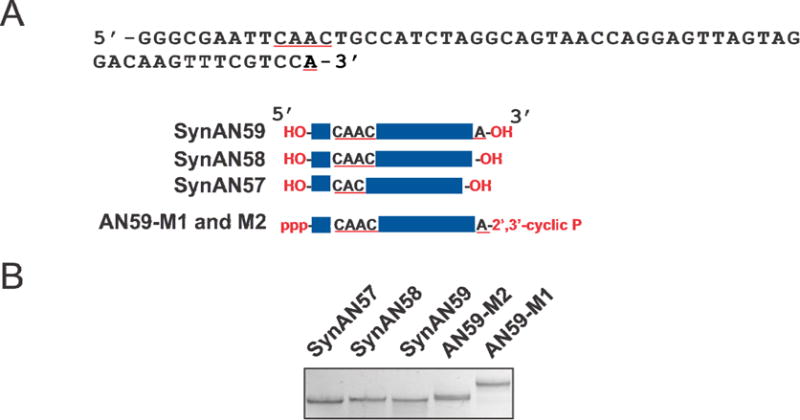Fig. 1.

(A) There were five RNAs used in this study, and the longest was a 59-nt RNA termed AN59 whose sequence is shown. Among the five, three were prepared by solid state synthesis, i.e., SynAN57, SynAN58 and SynAN59. Both the 5ʹ and 3ʹ ends of these RNAs have a hydroxyl group. As shown, SynAN58 was constructed without the last nucleotide or the “A” at the 3ʹ end, as compared with SynAN59. SynAN57 was missing another ‘A’ located in the middle of the sequence, as underlined in red. All of the three were inhibitors of AMPA receptors. AN59-M1 and AN59-M2 were two enzymatic transcripts generated from the same transcription reaction. As shown, AN59-M1 and AN59-M2 had identical sequence, length and the 5ʹ as well as the 3ʹ end groups; yet they had different structures. AN59-M1 and AN59-M2 must be used as a pair to inhibit the AMPA receptor channels (see Methods). It should be also noted that AN58-M1 and AN58-M2, lacking the last “A” as shown in the sequence, can be also made, and AN58-M1 and AN58-M2 as a pair are also biologically active. (B) All five RNAs showed different electrophoretic mobility on a 10% native polyacrylamide gel.
